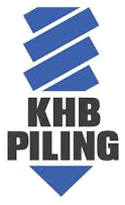Whether you’re looking to build a new house or a large commercial building, piling is an essential aspect of foundations. However, it isn’t always the best option for all projects.
Fortunately, there are different methods of pile foundation in London to meet your needs and requirements. This article will discuss some of the most common options, including Driven Pile, Tremmied Pile, Underpinning, and Mini-piling.
Driven Pile
Driven piles are deep foundation elements installed using impact or vibration hammers to design depth and resistance. They can be precast concrete or steel H-piles and can be installed in one length or joined for deeper piles.
These piles can be a cost-effective solution for sites with non-cohesive soils, ground that has a high water table or soils that contain contaminates. It is important that a proper geotechnical investigation is carried out to determine the suitability of driven piles for a particular site.
They often gain capacity after installation, and incorporating this in the design can save on time and materials. This phenomenon, called ‘setup’, can reduce the number of pilings needed to accommodate a given load capacity and, in some cases, result in fewer piles driven with lighter equipment.
The goal of this study is to develop an automated formulation that achieves optimized pile-group designs for a particular soil type and for a given axial load corresponding to the weight of the superstructure. This optimization method is implemented in real-world cases in London and has resulted in foundation solutions that are economically more efficient than those that were originally implemented. The benefit in terms of construction costs varies from 7% to 33% compared to original solutions.
Tremmied Pile
Structural piling, one of the cornerstones of civil engineering, has been around for centuries – and is still used today. Pile foundations transfer load from a structure or building, into the ground and are an essential part of the sub-structure system.
When constructing piles, the method used to construct them is important and affects how they perform in the long term. There are two main methods of construction: driven piles and tremmied piles.
Driven piles transfer load by friction between the soil and the surface of the pile over its full length. They are constructed with a series of interlocking steel sheets and can be used to create both permanent and temporary retaining walls.
In addition to transferring load, piles are also essential for the protection of the structure and its inhabitants. They help protect the structure from landslides, cliff falls and floods.
Underpinning
Piling is a centuries old method of underpinning, but it has evolved in recent years. It has been used to underpin existing structures, as well as to create new basements and cellars.
There are many reasons why foundations can fail – tree roots, historic pipes, seasonal changes in soils can all contribute to subsidence. When these occur, foundations can become unstable and a new underpinning technique is required to stabilize and strengthen them.
One such method is the Underpinning (Mass Concrete) procedure, which has been used since the late 1800s. It involves excavating the soil below the existing foundation in stages or ‘pins’ until a stable stratum is reached.
This is then filled with concrete and allowed to cure before the next excavation begins. To transfer the load from the old foundation to the new, a dry sand-cement packing mortar is rammed between each ‘pin’ and then the concrete is poured in.
Underpinning can be a cost-effective option for subsidence, particularly in the case of shallow depths and where excavation would be difficult. However, the traditional method should only be adopted in the hands of an experienced structural engineer.
Mini-piling
Often used for projects where access is restricted, Mini-piling is an efficient method of creating foundations. Its small rigs can be adapted to get into confined spaces and fit through doors, especially in railway stations or elevator shafts where a standard driven piling rig would be too large.
The most common type of mini pile consists of a hollow steel shaft that is screwed or drilled into the ground and filled with grout or concrete to form the pile. This allows the soil to be supported throughout, reducing the need for extra supports, particularly in weaker, looser soils.
Another method of mini piling is sectional auger, which entails boring down and gradually adding multiple flight sections as the pile is built. This enables more flex in the pile, increasing its load capability.
This piling method is often preferred for ground conditions that are more sensitive to vibration and noise, such as densely populated areas or locations with adjacent buildings. It can also be used in places where it is difficult to get larger rigs into, like elevator shafts or inside buildings.


